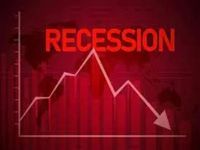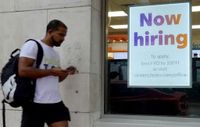Warning lights are flashing across the U.S. economy as a confluence of troubling signals—tightening corporate credit spreads, mounting job losses, and a deepening housing market slump—raises fears that a recession could be just around the corner. Despite recent headlines touting continued growth, major investors, economists, and policymakers are sounding the alarm, pointing to cracks beneath the surface that could soon widen into a full-blown downturn.
On August 11, 2025, corporate credit markets sent a clear warning. According to reporting from Science News, credit spreads—the extra yield investors demand to hold company debt—narrowed to within a whisker of their 1998 record low. Ordinarily, such tight spreads reflect confidence in robust global growth. But this optimism stands in stark contrast to the International Monetary Fund's (IMF) recent assessment, which puts the risk of a U.S. recession at a sobering 40%.
Big-money asset managers are already taking note. Fidelity and Russell Investments, two of the world’s largest investment firms, have begun reducing their exposure to riskier bonds and high-yield debt. Citi, meanwhile, has observed a surge in demand for derivatives that pay off if credit conditions deteriorate—a clear sign that professional investors are hedging against trouble ahead. "If shakier sectors start to buckle, defaults and refinancing headaches could pile up as soon as October," the Science News analysis warns.
Why does this matter for everyday Americans? Credit markets often spot trouble before stock markets do. When credit signals turn sour, it can trigger a cascade of effects: tighter lending, reduced business investment, and, ultimately, job losses. As optimism gives way to caution, even a modest uptick in defaults or a slower-than-expected growth rate could send shockwaves through both Wall Street and Main Street.
Indeed, those job losses are already materializing. As reported by Economic Times, over half of all U.S. industries are now cutting jobs. July’s labor data paints a worrying picture: manufacturing shed 11,000 jobs, retail layoffs soared by 249% compared to a year ago, and construction job cuts intensified amid cooling demand. While healthcare continues to add workers, its gains are nowhere near enough to counterbalance the losses elsewhere.
Economist Mark Zandi of Moody’s Analytics put it bluntly: “Payroll employment growth has stalled, and downward revisions to previous months’ data confirm weakening momentum beneath the surface.” He points out that employment trends often foreshadow broader economic shifts—and the recent spate of layoffs, he says, is a clear warning sign. The labor market slowdown is particularly concerning given that consumer spending drives nearly 70% of the U.S. economy. If households start tightening their belts, the knock-on effects could be severe.
Despite a robust 3% GDP gain in the second quarter of 2025, the labor force participation rate is slipping as uncertainty pushes some workers out of the job market entirely. The Federal Reserve, well aware of the risks, is reportedly considering interest rate cuts to cushion the blow. But, as Economic Times cautions, monetary policy typically takes months to filter through the economy—meaning relief may not come soon enough to prevent a downturn.
Businesses, too, are getting nervous. Many are pausing hiring and scaling back expansion plans as they await clearer signals about future demand. This collective retrenchment, if left unchecked, could deepen the slowdown and make recovery even more difficult.
Amid these mounting challenges, another key sector is flashing its own warning: housing. Jan Hatzius, Chief Economist at Goldman Sachs, recently predicted that residential investment—which includes spending on new home construction and renovations—will decline by 8% annually in the second half of 2025. In a report cited by Science News and other outlets, Hatzius pointed to persistent affordability problems and a reduction in immigration as major culprits behind the housing market’s ongoing slump.
“Affordability is still a major concern for purchasers,” Hatzius noted, referencing the growing use of mortgage buydowns to reduce rates. He further warned that a reduction in immigration could limit the formation of new households, dampening housing demand even further—especially if immigration policies become more restrictive.
Mark Zandi has also raised the red flag on housing, describing the current situation as a "red flare." He explained, “Home sales, homebuilding, and even house prices are set to slump unless mortgage rates decline materially from their current near 7% soon. That, however, seems unlikely.” Zandi emphasized that the combination of high mortgage rates—hovering between 6.60% and 7.04% since January 2025—and elevated home prices has drastically shrunk the pool of qualified buyers. In decades past, higher mortgage rates were offset by lower property prices, but that’s no longer the case.
Housing market weakness isn’t just a problem for would-be buyers and sellers. Historically, as economists like Zandi and Hatzius remind us, declines in residential investment often precede broader recessions. The housing sector’s tentacles stretch far: when home sales and construction slow, demand for everything from furniture to appliances drops, and construction job losses mount. The ripple effects can quickly spread across the economy, undermining consumer confidence and labor markets.
Analysis from Citi and Pantheon Macroeconomics underscores the point: a prolonged decline in property prices could drag down consumer spending enough to make a recession a real possibility. This pattern is hardly new. During the Great Recession, the collapse of the housing sector played a pivotal role in triggering the financial crisis and subsequent economic contraction. More recently, the Congressional Research Service and the Federal Reserve have highlighted sustained drops in residential investment as a key recession indicator, especially after several consecutive quarters of decline.
So, what does the road ahead look like? While some experts point to pockets of resilience—particularly in technology and services—that could soften the blow or delay a full downturn, the prevailing mood among economists is one of caution. Zandi has gone so far as to say a recession is “increasingly probable,” though he admits that predicting the precise timing remains difficult.
For policymakers and households alike, the message is clear: brace for tougher times. The Federal Reserve’s anticipated rate cuts may offer some relief, but they are unlikely to take effect quickly enough to head off a slowdown already in motion. Businesses and consumers are being urged to prepare for tighter budgets, shifting job markets, and a more challenging economic environment.
As credit market signals, labor market data, and housing trends all point in the same direction, the U.S. economy stands at a critical juncture. The coming months will reveal whether these warning signs are the prelude to a mild slowdown—or the opening act of a more severe recession.


